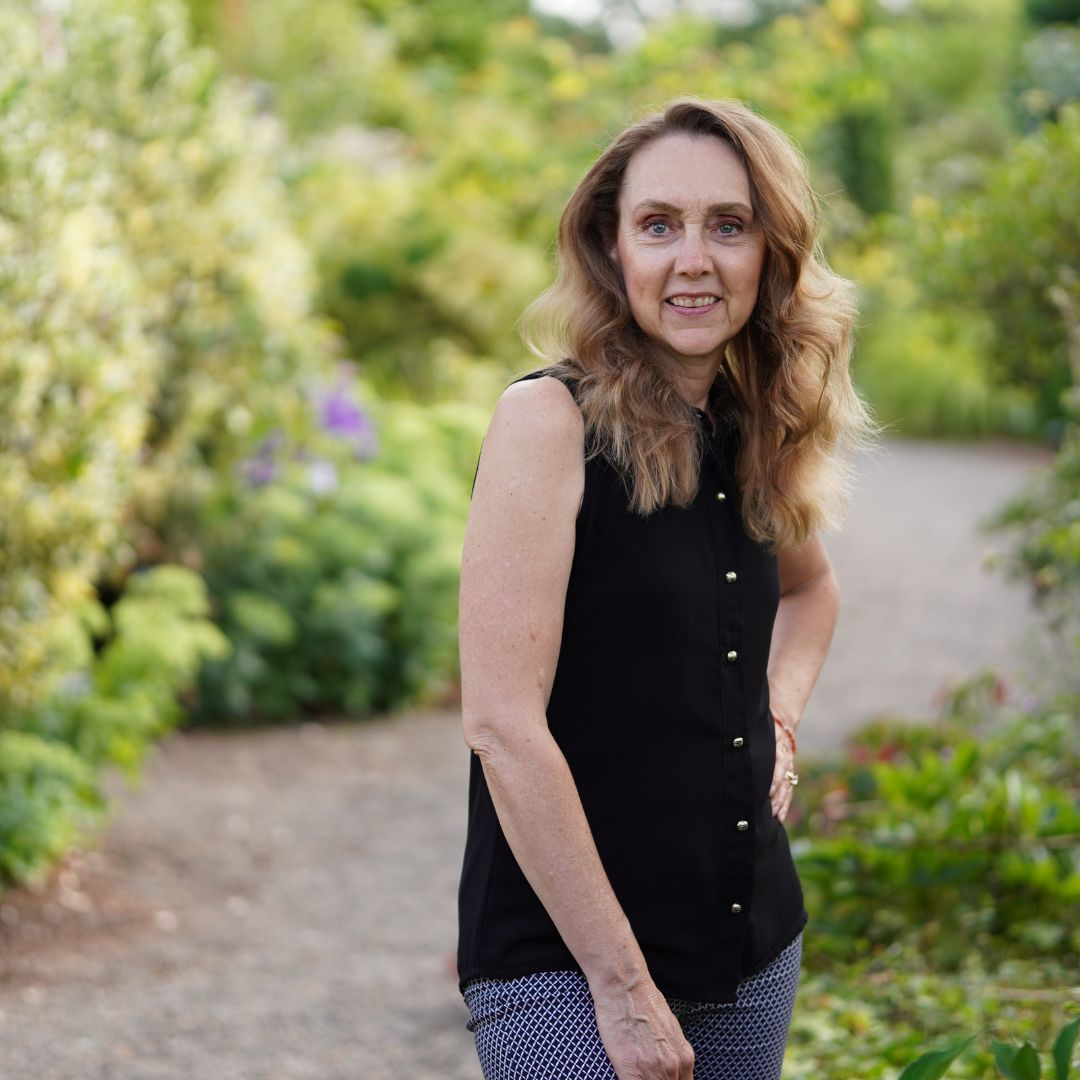As I moved from my 30s to my 40s, I started looking at health differently. When I moved through perimenopause, I bypassed traditional Western medicine and started looking for other ways to stay well into my 50s, 60s, and beyond.
Western medicine treats conditions with a prescription. I wasn’t interested in that. I was looking for ways to maximize my wellness without relying on prescriptions. It’s led me to a variety of holistic practices, which I credit today for my good health.
When I first started working with a menopausal specialist, she ran an in-depth hormone test and placed me on various supplements, including vitamin D. I’ve faithfully taken a handful of supplements every day since she recommended them, and attribute that practice to staying healthy throughout the years.
As we moved deeper into 2020, I started hearing more about vitamin D. Reports continued to come out that as many as 90 percent of Westerners could be deficient in vitamin D, given our lifestyle. The further north you live, the greater chance you have a deficiency. I wanted to learn more.
What is vitamin D?
Vitamin D is a little deceiving in that it isn’t really a vitamin at all. Instead, it functions more like a hormone.
During perimenopause, women start to notice changes in a wide variety of hormonal issues. Mood swings, hot flashes, aches and pains, can all be caused by not having proper hormonal balance as your body changes. While many of us may test for estrogen or progesterone issues, vitamin D deficiency has never been a test doctors recommend.
Visit your OB/GYN or general practitioner, and they probably won’t recommend testing for it. Even if you request it, they most likely will deny testing. (I know. It happened to me.)
That’s because I believe most traditional doctors don’t understand the importance of vitamin D in regulating good health. Vitamin D is a crucial part of our immunity. Low levels of vitamin D have a variety of conditions associated with it, including:
Heart disease
As estrogen starts to decline, women’s risks for heart disease increase. Vitamin D may play a role in bringing your numbers more into balance.
High blood pressure
Heart disease and high blood pressure have always been on my radar since I lost my father at 54 to a massive heart attack, and my mom suffered a massive stroke two years later … also at 54. Vitamin D deficiency can take its toll on both the heart and blood vessels. Vitamin D may add in extra protection as you move into menopause.
Diabetes
Research shows vitamin D is correlated to the body’s ability to use insulin. Low levels of vitamin D can slow insulin production and increase insulin resistance.
Immune disorders and Infections
Research shows there’s a strong correlation between vitamin D deficiency and increased problems during this last pandemic.
Bone health
Vitamin D and calcium are critical for proper bone health. That makes it imperative for women over 40 to ensure they are getting enough of both.
Cancers
Vitamin D may be a prevention tool in many different types of cancers. Melanoma, or skin cancers, may be reduced by proper vitamin D implementation. The biggest source of vitamin D is the sun, yet that’s what most of us block out with the use of clothing and sunscreen every time we step outside. There’s a difference between using the sun’s rays for good health, and allowing your skin to burn and blister.
Poor sleep
Vitamin D levels can help with mood swings and cognitive performance. It can help ensure you get a good night’s rest each night.
We’re only just starting to realize the importance of vitamin D for wellness care. But with all the evidence out there, it’s hard to ignore that as women move through perimenopause, we need to ensure we’re at proper levels as we strive for good health.
As you move into menopause, it becomes even more important to know your levels because research is also discovering it isn’t a one-size-fits-all issue.
Where vitamin D comes from
Vitamin D is also known as the sunshine vitamin. Natural vitamin D comes almost exclusively between sunlight exposure and our skin.
Our lifestyles are no longer conducive to connecting with sunlight.
Go back in time, and most people spent a fair amount of time outside. They soaked up the sun’s rays by working and playing outdoors.
Not anymore. Today, most of us spend a great majority of our time sitting behind a desk indoors, rarely seeing sunlight except for morning drives and possibly evening walks.
Vitamin D experts today recommend that we get at least 30 minutes of direct sunlight per day, with the sun overhead and warm enough to absorb into the body.
Even when most of us are outside, we cover up or add sunscreen, which blocks the chance of sunlight absorbing into our skin. Living here in the Pacific Northwest, I know there is no way I’m getting the sunlight I need to stay healthy.
But I wanted to know my levels. And when Western medicine deems it not to be important, I went looking for another way.
Finding a wellness resource to test vitamin D levels
It’s winter here in the Pacific Northwest. That means we only receive 8 or 9 hours of sunlight, and most often it’s blocked by cloud cover. Colder temperatures and lots of rain mean I’m not outside as much, and even when I am, I’m covered head to toe with boots, rain jackets, and ear warmers.
If you’re someone like me, you’re susceptible to low levels of vitamin D. The darker your skin, you have an even greater risk of vitamin D deficiency.
How do you know?

I went searching for a wellness practice that believes in creating a healthy wellness routine instead of waiting for sickness to move in. And I found it in a company called EquiLife.
Through all my research, I began to notice several other people I follow were talking about EquiLife. I like their approach to wellness, with tests and products that help with well-being.
They start by offering a variety of lab tests – mail-in kits you can do in the privacy of your own home. When your results are in, you meet with a wellness coach via Zoom, who will review your results and make recommendations.
The vitamin D test is straightforward. They provide a blood spot collection process that’s easy to complete. Then you drop your sample into the mail and wait for your results.
I’ve been supplementing vitamin D for years. But my results revealed I was still low, even with a supplement. I’ve since bumped up the amount of vitamin D I’m taking, and increased my vitamin K2, which helps with absorption. I’ll retest in 6 months.
Other sources of vitamin D
While your best source of vitamin D is sunlight, there are other ways to get it.
Born and raised in Denver, I moved to the Pacific Northwest right before my fiftieth birthday. When my daughter started looking at colleges, I remember a tour of the University of British Columbia in particular. We went through a room with sunlamps, and the guide said they were available to any student who may be SAD. I’d never heard of it – lack of sunlight isn’t something I’d dealt with in Colorado. SAD – seasonal affective disorder – can cause struggle with low mood swings, trouble sleeping, and concentration issues.
Light therapy – sunlamps – can also be a good source of vitamin D in the winter months. Plus, it can leave you feeling warmer, happier, almost as if you’re soaking up the sun’s rays. That’s a win/win in my books.
I’ve also learned that certain types of mushrooms can add in vitamin D. Probably not enough without supplementation, but why not add mushrooms to your plant-based diet?
I’m currently diving into this recipe more than ever. A comfort food of sorts as we’re experiencing very low temperatures. (For Portland anyway.)
Vegan Mushroom Risotto

Ingredients
- ¾ pound assorted fresh mushrooms, chopped
- ½ cup shallots, chopped
- 3 garlic cloves minced
- 1 ½ cups arborio rice
- ½ cup dry white wine
- 1 teaspoon dried thyme
- 1 teaspoon dried rosemary
- 2 tablespoons nutritional yeast
- 4 cups veggie broth, warmed
- ½ cup full-fat coconut milk
- 2 tablespoons miso paste
- 1 tablespoon lemon juice
- ½ cup frozen peas, thawed
- Olive oil
- Salt and pepper to taste
Instructions
- Heat 1 tablespoon of olive oil in a large pot over medium heat. When the oil is hot, add mushrooms and cook until they release their moisture and well browned. Remove them from the pot and set aside.
- Heat 1 tablespoon of olive oil in the large pot over medium heat. Add the shallots and cook until soft and translucent. Add the garlic and heat for 1 minute until fragrant.
- Stir in the rice and cook for 1 to 2 minutes until shiny and translucent. Stir in wine, thyme, and rosemary. Keep stirring until fully absorbed by the rice.
- Begin adding broth ½ cup at a time and bringing it to a simmer until it’s fully absorbed. Keep adding ½ cup at a time until all of the broth is absorbed into the rice. This process should take 15 to 20 minutes. The rice should be very creamy with just a bit of firmness at the center of the grain.
- Stir in nutritional yeast, coconut milk, and miso. Be sure the miso is fully incorporated into the rice, and the coconut milk is fully absorbed. Test for doneness. You can add a bit more veggie broth if it needs further cooking.
- Remove from heat and stir in peas and cooked mushrooms. Taste, and season with salt and pepper.
- Enjoy!
Notes: While I love mushroom risotto, I’ve incorporated broccoli instead of mushrooms, and it’s equally as good. (Just in case you have a family member who isn’t crazy about mushrooms. 😉 )


+ show Comments
- Hide Comments
add a comment